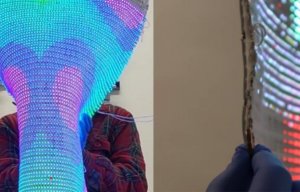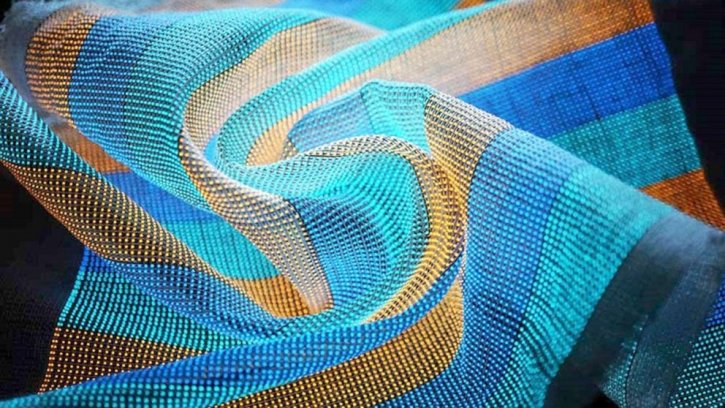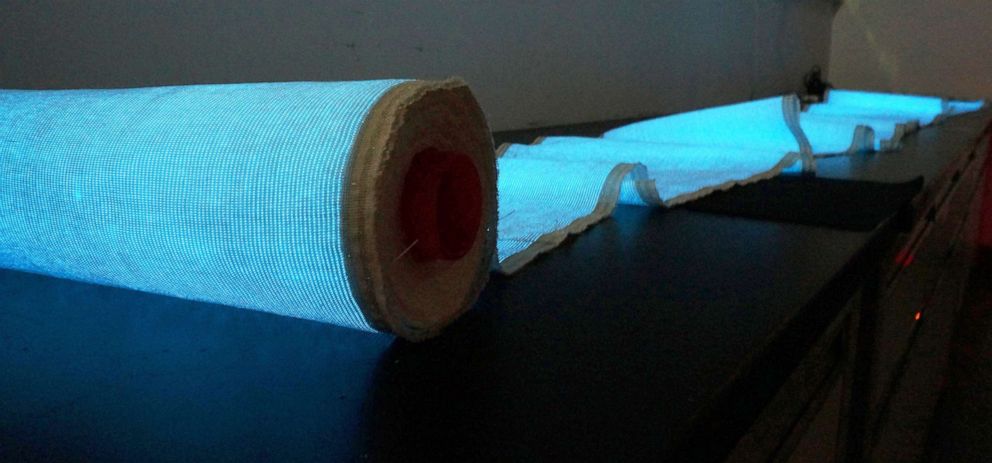
Overcoming the limitations of smart fabrics
The new design weaves conductive and luminescent fibres together with cotton into a fabric display of illuminating units that are both durable and easy to assemble.

16th March 2021
Innovation in Textiles
|
Shanghai, China
An electronic textile that is six meres long with a width of 25cm has been developed by a team at Fudan University in China, opening up the potential for applications in communications, navigation and healthcare.
The textile is flexible, breathable and durable, making it an ideal material for practical uses, according to Professor Huisheng Peng, of Fudan’s Department of Macromolecular Engineering who led the development team.
Electronic textiles capable of communicating, sensing and supplying electricity have been reported previously, but textiles with functional, large-area displays have not yet been achieved, because it is challenging to obtain small illuminating units that are both durable and easy to assemble over a wide area.
We expect these smart textiles to shape the next generation of electronic communication tools
Conventional solid-state display materials are not readily compatible with textiles because they struggle to withstand the natural deformation that occurs when fabrics are worn and washed. The new design weaves conductive and luminescent fibres together with cotton into a fabric display and has been shown to overcome this limitation.
Weaving conductive weft and luminescent warp fibres forms micrometre-scale electroluminescent units at the weft–warp contact points. The brightness between electroluminescent units deviates by less than 8 per cent and remains stable even when the textile is bent, stretched or pressed.

As the diameter of the light-emitting fibres can be precisely adjusted between 0.2 mm and 0.5 mm, clothing woven with it can be ultra-fine and ultra-flexible. Fabrics will fit the irregular contours of the human body and can be as light and breathable as ordinary fabric.
After 1,000 cycles of bending, stretching and pressing, the performance of the vast majority of electroluminescent units remained stable. In addition, the brightness of the electroluminescent units remained stable after 100 cycles of washing and drying.
The researchers incorporated a touch-sensitive 16-button fabric keyboard, solar-energy-harvesting threads and battery fibres into their textile to add interactivity and a power supply. They added electronics to wirelessly link it to a smartphone via a Bluetooth connection so users could send and receive messages on their sleeves, as well as see real-time locations on a map.
“With the integration of more functionality, we expect these smart textiles to shape the next generation of electronic communication tools,” Professor Peng said. “We have shown that an integrated textile system consisting of a display, keyboard and power supply can serve as a communication tool, demonstrating the system’s potential within the ‘internet of things’ in various areas, including healthcare. Our approach unifies the fabrication and function of electronic devices with textiles.”
The researchers detailed their findings online on March 10 for the journal Nature.

Business intelligence for the fibre, textiles and apparel industries: technologies, innovations, markets, investments, trade policy, sourcing, strategy...
Find out more